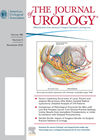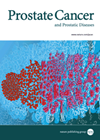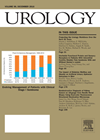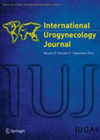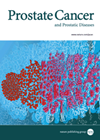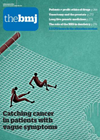
Journal Reviews archive for 2017
Emergency department revisits for patients with ureteral stones
The authors aimed to identify clinical predictors for emergency department (ED) revisits in patients diagnosed with ureteral stones. Patients presenting between 2010 and 2013 were included. Those who were admitted at the initial presentation were excluded. CT scans were reviewed...
Prognostic impact of preoperative neutrophil-to-lymphocyte ratio after radical prostatectomy
Neutrophil-to-lymphocyte ratio has been shown to be a prognostic factor in a number of different cancers. This is one of the largest studies to date to evaluate its effect on overall survival in patients who have undergone radical prostatectomy (RP)...
ABU joins BCG in fight against NMIBC recurrence?
The authors test a hypothesis retrospectively in two cohorts of patients with non-muscle invasive bladder cancer (NMIBC), that endogenous bacteria in the bladder might exert antitumour effects, similar to live mycobacteria (BCG), through local immune-related or other mechanisms, on NMIBC...
Who should be taking care of the adolescent with testicular torsion?
From time to time (as paediatric surgeons), we receive referrals from regional hospitals to explore the testis in older boys. Given the time-critical nature of the condition, patients should benefit from assessment and surgery performed locally (when possible). Inter-hospital transfer...
Predictors of vaginal mesh exposure after mid-urethral sling placement
Vaginal mesh exposure following mid-urethral sling (MUS) insertion can be a difficult complication to treat. The aim of this study was to identify possible risk factors in patients who had unfortunately developed vaginal mesh exposure following MUS surgery. This was...
Comparison of the microbiological milieu of CIC patients
Children performing clean intermittent catheterisation (CIC) have a higher risk of bacteriuria. This occasionally can lead to full urinary tract infection (UTI) which can influence long-term renal function. Hydrophilic catheters are said to be less traumatic to the urothelium and...
Predictive factors for conservative treatment failure in paediatric blunt renal trauma
Blunt renal trauma is managed conservatively in children in the vast majority of cases. Grade IV renal injury is also generally managed non-operatively although occasionally intervention is needed for a urinoma that fails to settle. These authors retrospectively looked at...
Surgery in disorders of sexual development with gender issues
After the initial consensus meeting of 10 years ago on disorders of sex development (DSD) with the introduction of the new terminology and classification there are still abundant controversial issues associated with the management of children with these conditions. This...
Sacral agenesis and neurogenic bladder: long-term outcomes of bladder and kidney function
These authors looked at single institution outcomes for sacral agenesis (without spina bifida) with reference to renal function and bladder function. All had urodynamics either at diagnosis (56%) or soon after. Of 43 patients (23 female, 20 male), 37 had...
Renal fossa recurrence after nephrectomy for renal cell carcinoma
This paper is an analysis of 36 years of radical nephrectomy for renal cell carcinoma in the Mayo Clinic (1970-2006). In particular, it contains an analysis of the risk of renal fossa recurrence after nephrectomy (partial nephrectomies are not included)...
PET imaging of prostate-specific membrane antigen in prostate cancer
Molecular imaging utilising prostate-specific membrane antigen (PSMA) as a target has increasingly been mentioned at key conferences and meetings. PSMA is a membrane metalloenzyme that is overexpressed in prostate cancer, with the degree of expression appears to correlate with tumour...
Vasectomy and prostate cancer
Urologists are always trying to identify risk factors for prostate cancer (CaP). This population-based study is from Ontario, Canada. The study sample comprised nearly 300,000 men who underwent vasectomy and an equal number who did not. The primary outcome was...

